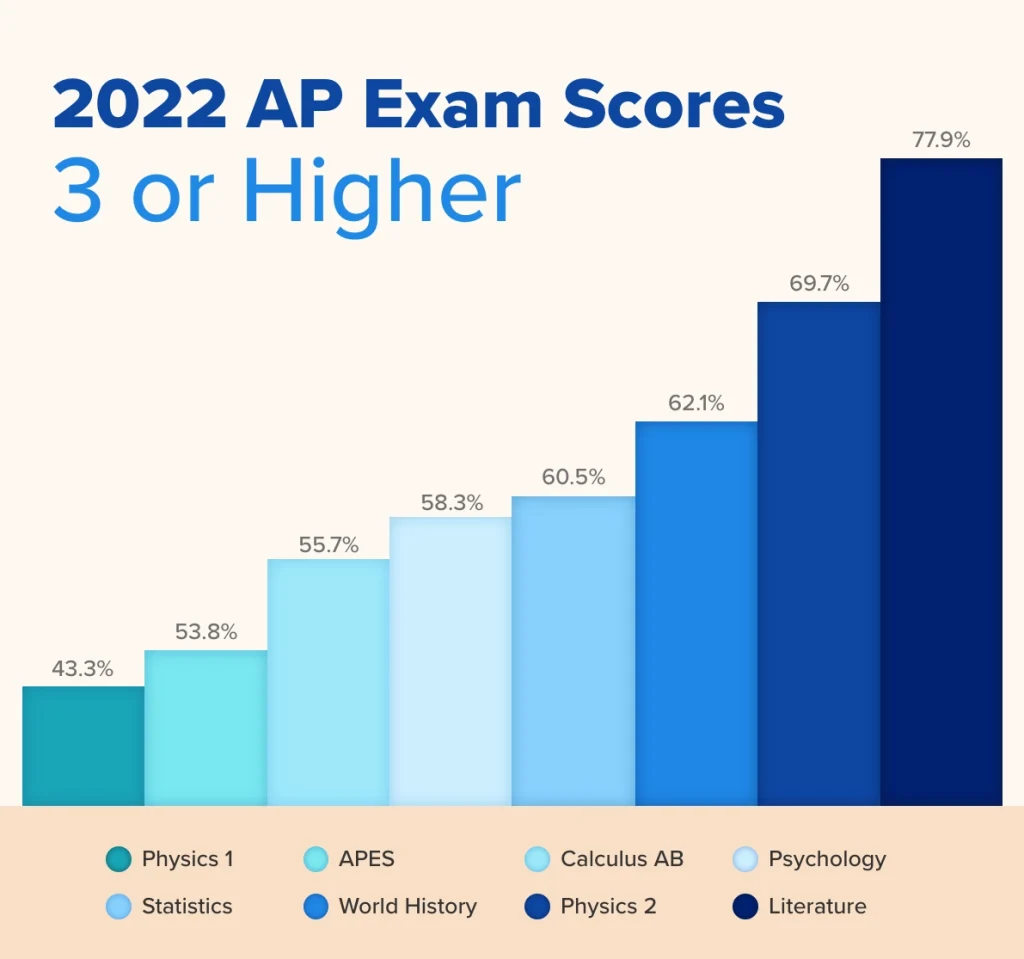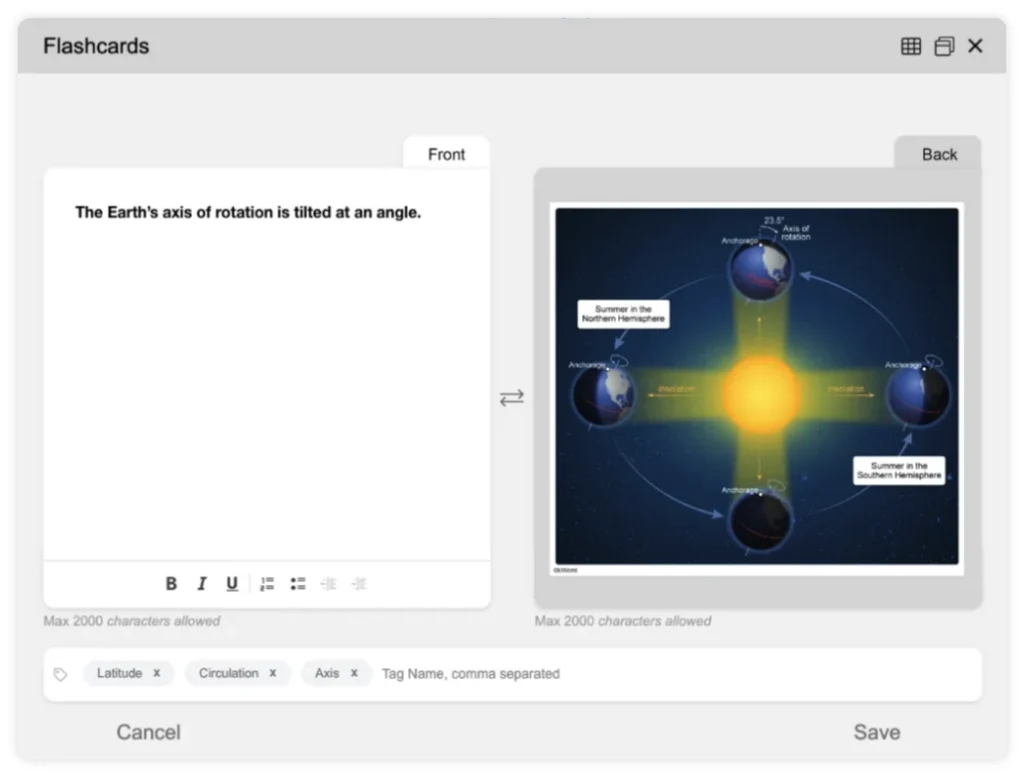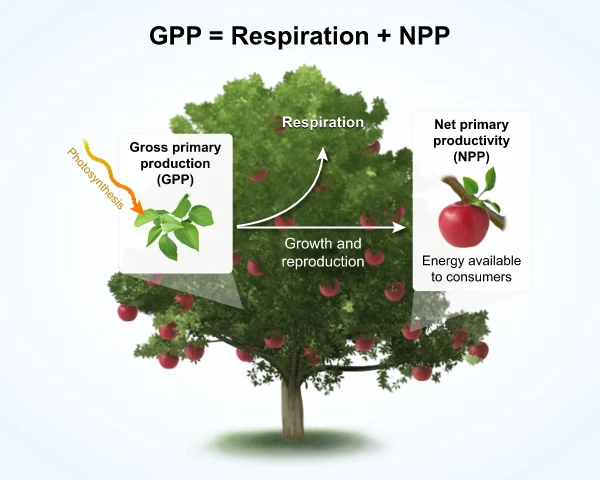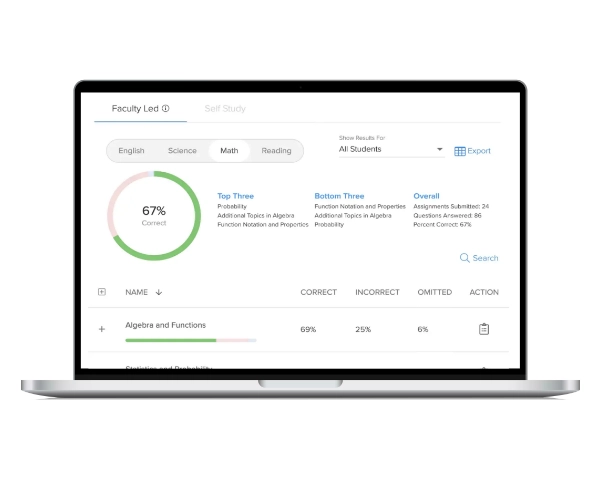Rachel Carson, widely believed to be the founder of modern environmental science, published her most famous work, “Silent Spring,” in 1962. Although this controversial book would result in national policy changes regarding pesticides and launch the modern environmental movement, it did not do so as a result of happenstance. Carson had anticipated a lot of pushback from the chemical industry players that benefited from the use of pesticides like DDT, so she spent years compiling 55 pages of notes from experts and scientists that were able to support her claims with scientific evidence. Her thorough preparation led to a new public awareness of the effect humans have on the environment.
AP® Environmental Science teachers also understand the importance of thorough preparation. Leading up to the summative assessment, these teachers must make sure their students are ready by preparing a rigorous APES review. Every course topic must be covered with a last-minute content spiral, along with a variety of practice questions to ensure their students will be confident on test day. APES Teachers do not take planning for this AP Environmental Science review lightly, either. They understand that the test is extremely difficult. In 2022, 53.8% of students who took the AP Environmental Science test earned a score of 3 or higher.1

Student Score Distributions on AP exams (2022)
Teachers of AP Environmental Science must invest a lot of time in designing a rigorous summative review to give their students the best chance of performing well on the exam. To help make that a little bit simpler, we have offered five last-minute AP Environmental Science test preparation tips that can be incorporated into any APES review.
Tip 1: Break Curriculum into Smaller, Doable Parts
In preparation for exams, teachers systematically revisit essential concepts in the weeks preceding the assessment to ensure students retain the material on test day. However, limited time for APES last-minute review activities poses challenges in covering the entirety of the course content. Nevertheless, research suggests that breaking down the study material into manageable “bite-sized” chunks is the most effective approach to preparing for a summative test within a few weeks. This strategy, known as “chunking,” facilitates efficient studying and enhances readiness for the test. By dividing the material into smaller sections, students can effectively navigate and grasp the content in a more structured manner.
An article in the Educational Psychology Review2 investigated the impact of dividing information into smaller, more comprehensible pieces on student learning. The study discovered that chunking the material increased students’ confidence as they progressed through the spiraling process. APES teachers are not required to cover an entire unit or a significant foundational concept in a single class session. Instead, they can focus on smaller segments of the unit or concept individually, allowing students to review all the necessary content for the test. This approach enables students to concentrate on specific topics, fostering better comprehension and retention of the material.

AP Environmental Science teachers can also use “interleaving” to prepare their students for the test, which involves reviewing multiple related topics simultaneously. Studies indicate that when educators introduce seemingly different topics, students develop the ability to distinguish between them and effectively apply their knowledge. By incorporating both chunking and interleaving strategies, AP Environmental Science teachers can greatly enhance their students’ readiness and confidence on the day of the test. This comprehensive approach to AP Environmental Science test preparation facilitates a deeper understanding of the subject matter and empowers students to excel in their performance.
Our choice for an APES exam review guide: Teaching AP Science
Our choice for an AP Environmental Science review guide resource for teachers planning their summative test prep is Teaching AP Science’s Resources to Review for the APES Exam study guide.
Why We Chose It:
- Comprehensive resource: The link provides a one-stop resource for AP teachers to review AP Environmental Science, covering all necessary topics.
- Effective study plan: The guide offers a clear study plan, helping teachers organize their review process and maximize their preparation time.
- Thorough content coverage: The link ensures comprehensive coverage of all topics tested in the AP Environmental Science exam, providing access to detailed notes for each topic.
- Abundant practice materials: The guide offers a variety of high-quality practice resources, including practice tests and questions, to help teachers assess their knowledge and reinforce key concepts.

Tip 2: Practice with Released Exams
Teachers can provide valuable support to their students in getting ready for the AP Environmental Science exam by offering practice opportunities with previously released exams. This approach is highly likely to enhance students’ test scores. A study conducted at the University of Nebraska-Lincoln3 found that practicing with genuine test questions, such as those found in released exams, led to an average score increase of 15%. In contrast, studying with different questions resulted in a smaller score improvement of only 6%. It is evident that practicing with released exams is the most effective preparation method, offering significant advantages for students’ performance.
Our choice for released exam questions: The College Board® secure released exams
For accessing released AP exams, the College Board is our recommended choice as they are the primary source. While these exams aren’t accessible to students, AP teachers can utilize them for practice and review purposes. In addition, these exams can be found in AP Classroom.4 AP Environmental Science instructors can refer to the AP Classroom User Guides for more information on the released exams. It’s a valuable resource that provides comprehensive insights to help teachers effectively incorporate the released exams into their teaching and exam preparation strategies.
Why We Chose It:
- These questions are actual exam questions from previous years, ensuring their reliability and authenticity.
- They closely match the current structure and format of the AP Environmental Science exam, including the number, type, and duration of the questions.
- A wide variety of question types and topics can be found in the previous exam questions, providing comprehensive coverage.
- The questions are thoughtfully designed to encompass different levels of difficulty, ranging from easy to challenging.
Tip 3: Multiple-Choice Practice Makes Perfect
It’s no surprise that practicing with multiple-choice questions plays a vital role in preparing for the AP Environmental Science test. AP Environmental Science teachers should strive to encourage their students to tackle a minimum of two multiple-choice questions each day as they navigate through the APES exam review material. The use of multiple-choice exit tickets or bellringers can provide an excellent opportunity for students to review important concepts that could appear on the test.
By regularly engaging in practice with multiple-choice questions, students can develop a valuable habit of utilizing annotations, identifying context clues, and eliminating obviously incorrect answers. This habit significantly enhances their efficiency and accuracy when taking tests. Moreover, students who dedicate time to practicing multiple-choice questions may witness improvements in their time management skills and grow accustomed to the pace of the test, resulting in a more confident test-taking experience.
Our choice for multiple-choice practice: UWorld
We highly recommend UWorld’s Learning Tools for AP Courses as the ultimate resource for multiple-choice practice. It’s an excellent tool to incorporate into your last-minute AP Environmental Science test preparation.
The explanations provided by UWorld for their multiple-choice questions are truly outstanding. With the help of adaptive learning technology, each lesson is customized to meet the students’ individual comprehension levels. This ensures that students receive practice that is tailored to their understanding and facilitates their learning process.
UWorld can be utilized throughout the entire academic year, offering students the opportunity to review and reinforce their knowledge, evaluate their strengths and areas for improvement, and enhance their overall proficiency in preparation for the AP Environmental Science exam. Additionally, during the final weeks of test preparation, UWorld provides a quick and efficient way for students to review essential concepts and practice multiple-choice questions.
Why We Chose It:
- Students receive prompt feedback and detailed explanations for both correct and incorrect answers, fostering a comprehensive learning experience. These explanations aid students in understanding their mistakes and deepening their grasp of crucial Environmental Science concepts.
- The resource encompasses a wide range of multiple-choice practice questions, covering all the subjects evaluated in the AP Environmental Science exam. This extensive coverage guarantees that students are fully prepared and possess a strong command of the subject matter.
- To simulate the time restrictions of the actual AP Environmental Science exam, the practice questions are timed. This feature familiarizes students with the time constraints of the exam and allows teachers to assess their students’ ability to complete it within the allocated time frame.
- Teachers have the flexibility to handpick specific topics and question types for their students to practice during review sessions. This targeted approach enables teachers to focus on areas where students need the most support, ensuring personalized guidance and comprehensive preparation for the AP Environmental Science final exam.

Tip 4: Greater Understanding with Justifications – Studying for FRQs
Recognizing the importance of truly grasping concepts is a key distinction between modern education and that of the past. To ensure students genuinely understand a subject, teachers must go beyond simply giving them the answers and instead help them unravel the “why” behind it. When preparing for the AP Environmental Science test, it is crucial to provide ample opportunities for students to justify their responses. A study published in the Journal of Computer-Assisted Learning5 revealed that students who had to explain their answers demonstrated a stronger comprehension of the material compared to those who only provided answers. By incorporating written explanations into the learning process, students can better comprehend the subject matter and retain it effectively.
Encouraging students to justify their answers in writing also prepares them for free-response questions, a significant component of the AP Environmental Science test. Furthermore, offering online examples of exceptional free-response question (FRQ) responses can greatly enhance students’ performance on the exam. By analyzing sample questions, teachers and students can collaborate to generate ideas and develop effective FRQ answers together.
Our choice for additional FRQ practice: CrackAP
CrackAP’s AP Environmental Science Free-Response Practice Tests provide a great resource for AP Environmental Science FRQs in addition to the questions released by the College Board.
Why We Chose It:
- Comprehensive FRQ coverage: The resource offers a diverse range of FRQ practice questions that cover all major topics tested in the AP Environmental Science exam.
- APES Last-minute review tool: Designed for an efficient AP Environmental Science review, the resource allows teachers to quickly access and assign FRQ practice questions to reinforce key concepts.
- Authentic exam experience: By closely resembling the format and style of AP Environmental Science FRQs, the resource helps students familiarize themselves with the exam’s requirements.
- Convenient online access: With the provided link, teachers can easily navigate to the resource and seamlessly integrate it into their lesson plans for immediate implementation.
Tip 5: Repetition with Flashcards
Repetition is an effective method to ensure information retention when reviewing past course material and important terminology. Flashcards provide an interactive learning experience that enhances memory recall, enabling students to remember information for longer periods of time. According to the Central Penn College Learning Center, flashcards facilitate active recall, engaging students in the learning process and establishing lasting connections with the material.6
When preparing students for the AP Environmental Science final exam, teachers need to cover a wide range of scientific concepts and essential vocabulary. Incorporating flashcard-based activities with a spiral approach maintains student interest and motivation. Students can utilize flashcards for independent or group study sessions. Regular use of flashcards in APES classes promotes better retention and comprehension of key course information.
Our recommendation for AP Environmental Science flashcards: UWorld
We highly recommend the UWorld flashcards feature as an excellent resource for AP Environmental Science. It’s a fantastic tool for students to enhance their knowledge and review for the APES exam. With UWorld flashcards, students have the freedom to create personalized decks and focus on specific subjects of interest. It’s an ideal choice for those aiming to excel in the AP Environmental Science test, as the flashcard feature can be customized and is incredibly user-friendly.

Teachers can also assign various review activities that involve the use of traditional paper flashcards. Here are some recommendations on how to effectively utilize them while preparing for the AP Environmental Science (APES) exam.
Prioritize Comprehension Over Memorization:
Instead of relying solely on rote memorization, strive to establish connections between the flashcard content and related concepts to enhance your overall understanding of the material.
Create Personalized Flashcard Decks:
Craft your own set of flashcards to actively engage with the subject matter and express the information in your own words. This approach aids in better retaining the information.
Incorporate Words and Images:
Enhance your flashcards by combining both textual and visual elements. By associating the information with images and text, you can strengthen retention and recall.
Infuse Fun into Review Sessions:
Infuse enjoyment and interactivity into your flashcard review sessions by incorporating games or other engaging activities. This not only boosts retention but also fosters a positive learning experience.
Instead of relying solely on rote memorization, strive to establish connections between the flashcard content and related concepts to enhance your overall understanding of the material.
Craft your own set of flashcards to actively engage with the subject matter and express the information in your own words. This approach aids in better retaining the information.
Enhance your flashcards by combining both textual and visual elements. By associating the information with images and text, you can strengthen retention and recall.
Infuse enjoyment and interactivity into your flashcard review sessions by incorporating games or other engaging activities. This not only boosts retention but also fosters a positive learning experience.
Bonus Tip: Prepare Students with Test Day Reminders
This last suggestion might seem more like general advice for test day rather than a last-minute tip specifically for APES. However, it’s crucial for teachers to go over what students should do and bring on the day of the exam. It’s a common occurrence for students to forget simple things like turning off their phones, bringing a pencil, or even showing up late for their AP exams. Surprisingly, a study conducted by the College Board7 revealed that students who arrived early and had all the necessary supplies for their AP exams scored an average of 20 points higher compared to those who were late or forgot their materials. So, make sure to discuss a checklist of preparations your students must complete for the AP Environmental Science exam and remind them of the essential items they need to bring along.

Checklist of Reminders for AP Environmental Science Students
The Day Before the APES Exam:
Get a good night’s sleep for a solid 8 hours.
Prepare all the necessary items for the test in advance.
Avoid overstudying; find a healthy balance.
Fuel up with a balanced meal and stay hydrated.
Allocate time for relaxation and stress-relief activities.
Brush up on test-taking strategies.
Double-check the exam’s location and start time.
Set multiple alarms to ensure you wake up on time.
Pack your bag with a valid photo ID and other required items.
Plan your route to the test location.
The Day of the APES Exam:
Bring a few sharpened No. 2 pencils with erasers.
Bring a pen with dark blue or black ink.
Carry a government-issued photo ID.
Remember to bring your AP student packet containing the AP number label and demographic sheet.
Don’t forget to bring your exam e-ticket or registration confirmation.
Have a watch to keep track of time during the exam.
Pack a snack and water, which can only be accessed during breaks and must be placed on the floor.
Key Takeaways
For teachers aiming to provide top-notch content review and AP Environmental Science test preparation, the last few weeks leading up to the APES exam are undeniably critical. By implementing the five recommendations outlined in this article, APES instructors can effectively support their students in feeling well-prepared and self-assured when tackling their exams.
Learn more about how we support AP educators who strive to make a difference in the lives of their students with our Learning Tools for AP Courses.

References
- Student Score Distributions* AP exams – May 2022. (n.d.). Retrieved March 22, 2023, from https://apcentral.collegeboard.org/media/pdf/ap-score-distributions-by-subject-2022.pdf
- Rohrer, D. (2012, July 28). Interleaving helps students distinguish among similar concepts – educational psychology review. SpringerLink. Retrieved March 21, 2023, from https://link.springer.com/article/10.1007/s10648-012-9201-3
- The effects of age and professional expertise on … – Wiley Online Library. (n.d.). Retrieved March 22, 2023, from https://onlinelibrary.wiley.com/doi/abs/10.1002/acp.1467
- Formative assessment. AP For All. (n.d.). Retrieved March 29, 2023, from https://apforallnyc.com/formative-assessment/
- Let me explain! the effects of writing and … – Wiley Online Library. (n.d.). Retrieved March 22, 2023, from https://onlinelibrary.wiley.com/doi/10.1111/jcal.12608
- Libguides: Learning Center – Study Skills: Flashcards. Flashcards – Learning Center – Study Skills – LibGuides at Central Penn College. (n.d.). Retrieved March 22, 2023, from https://guides.centralpenn.edu/c.php?g=695569&p=4999857
- Source: College Board. (2021). AP Exam Score Distributions. Retrieved from https://reports.collegeboard.org/media/pdf/2021-ap-student-score-distributions_1.pdf




